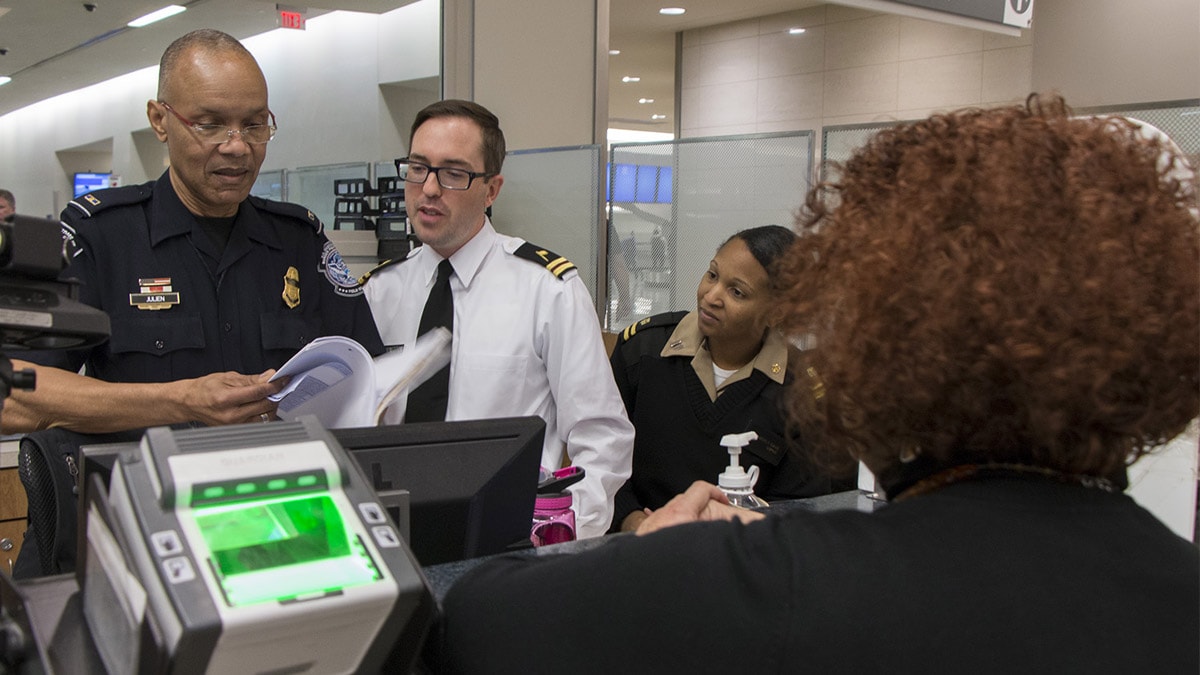At a glance
- Two federal public health tools are available to manage travelers who are known or suspected to have a serious contagious disease: the Do Not Board list and the Public Health Lookout.
- The Do Not Board list prevents travelers with risk of spreading a contagious disease from boarding an airplane.
- The Public Health Lookout prompts Customs and Border Protection (CBP) to notify public health authorities about the traveler so they can assess the need for follow-up or treatment.

Do Not Board List
Diseases are just a flight away. To protect the public's health, CDC partners with the Department of Homeland Security to prevent the spread of serious contagious diseases during commercial air travel. In June 2007, the two agencies established the Do Not Board list. It prevents travelers known or suspected to have a contagious disease that poses a threat to the public's health from boarding commercial airplanes. The Do Not Board list prevents a person from obtaining a boarding pass for any flight into, out of, or within the United States.
The Transportation Security Administration (TSA) enforces this list. Under the Aviation and Transportation Security Act (49 U.S.C. 114), TSA may take actions necessary to reduce the risk of threats to aviation and transportation security. This includes denying boarding to travelers CDC identifies as having or likely having a contagious disease that poses a public health threat to other passengers or crew.
Travelers on the Do Not Board list (a public health list) action are not part of the No Fly List. Federal law enforcement agencies use the No Fly List for their own purposes.
Public Health Lookout
Travelers placed on the Do Not Board list are also issued a Public Health Lookout. When a person who has been issued a Public Health lookout tries to enter the United States at any port of entry (seaport, airport, or land border), CBP is alerted to notify public health officials. When this happens, health officials review the person's infectious disease status to ensure appropriate isolation, if indicated, and other public health management, including helping the person get treatment if needed. Having a Public Health Lookout attached to a person's name does not necessarily prevent travel or deny a person entry into the United States.
Why Both Tools are Needed
The Do Not Board and Public Health Lookout lists are two different but complementary tools for reducing the risk of spread of contagious diseases during travel. TSA administers the Do Not Board list, which prevents people known or suspected to have a contagious disease from flying commercially. CBP manages the Public Health Lookout that helps identify these people if they attempt to enter the United States by air, land or sea. Since the processes began in 2007, both tools have been used primarily for people with infectious tuberculosis. Preventing people with contagious diseases from traveling also helps to connect them to care or continued medical treatment, as needed.
Placing people on federal public health travel restrictions
These tools can be used for anyone known or suspected to have a contagious disease that poses a threat to the public's health if they meet certain criteria as listed below.
Local and state public health officials and officials of other federal agencies (such as the Department of State) or foreign governments can request CDC's assistance if a person known or suspected to have a contagious disease that poses a public health threat intends to travel. CDC helps ensure these people do not travel while at risk of spreading disease.
The criteria for adding people to the Do Not Board and Public Health Lookout are:
- Person is known or believed to be infectious with, or at risk for developing, a serious contagious disease that poses a public health threat to others during travel; and any one of the following three:
- Person is not aware of diagnosis or not following public health recommendations, or
- Person is likely to travel on a commercial flight involving the United States or travel internationally by any means; or
- Travel restriction is needed to respond to an outbreak of a serious contagious disease or to help enforce a public health order.
A person must meet the first criterion plus one of the three sub-criteria before these tools can be used.
These tools have been used for people with suspected or confirmed infectious tuberculosis (TB), including multidrug-resistant tuberculosis (MDR TB), and for measles in a small number of cases. During 2020-2022, CDC used these authorities to restrict travel of people with COVID-19 and close contacts who were recommended to quarantine. These authorities were also used for monkeypox in 2022. Travel restrictions have also been used for other suspected or confirmed contagious diseases that pose a public health threat during travel, including viral hemorrhagic fevers such as Ebola.
Removing the Restrictions
Once public health authorities confirm a person is no longer at risk of spreading disease, the restrictions are removed. This is typically done within 24 hours. CDC also reviews the records of everyone whose travel is restricted for public health purposes every two weeks to determine eligibility for removal.
